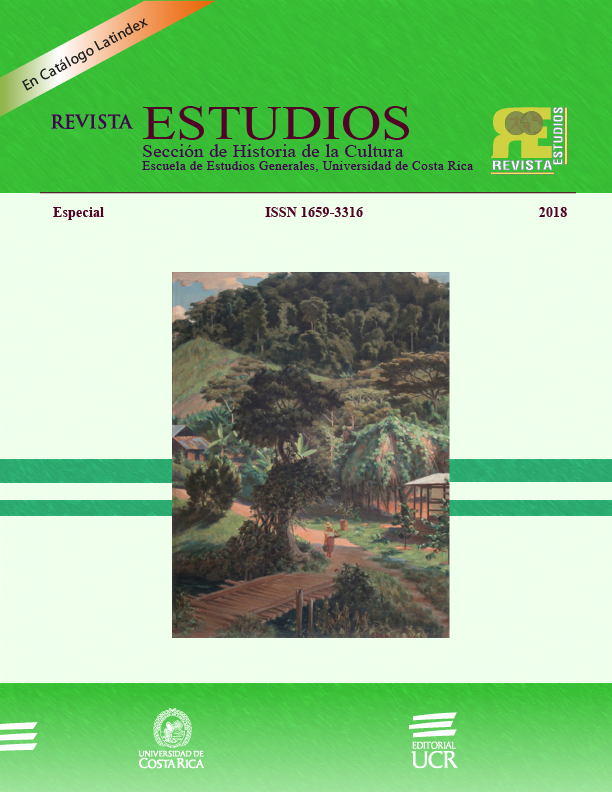Abstract
The story entitled "El puente" by the Costa Rican writer Carlos Salazar Herrera shows the dichotomy posed by Sarmiento (1845) between civilization and barbarism, where the natural space is analogous to barbarism and is represented by the Chela (main character) and its customs. On the other hand, civilization is related to city values, aspect that Marcial symbolizes, character that embodies the patriarchal society, as well as the myth of whitening. In the whitening project "Vallecentralino", the invisibility of the indigenous world was an unavoidable requirement, since it did not fit into the liberal civilizing model. The other option of the subalternized groups was to flee to the wild fields, far from the phalanges of the colonizer. Therefore, the dilemma was to assimilate or "disappear." However, in the story the Chela suffers a fourfold oppression, since she is part of an ethnic group inferiorized by her culture, she is also indicated by the color of her skin, because she is an orphan and a woman. In this sense, the Chela, besides embodying the Costa Rican founding myth, is a symbol of the tainted country, mocked and surrendered to the arms of the conqueror, personified by Marcial, who, by all accounts, alludes to the military and the bellicose. In addition, it is interesting to emphasize that the bridge, whose sound resembles that of a marimba, is also the transition between the wild and natural space, that is, between rurality and civilized space, or between the town and the city. Additionally, this article seeks to explain how the bridge constitutes the line of "being and not being", an aspect developed by Fanon (1952) and later problematized by Grossfoguel.References
Bolaños, B., y González, G. Espacio rural e identidad nacional en los audiovisuales hechos a partir de la obra literaria de Carlos Salazar Herrera. En revista Comunicación, Vol.19,año 31, N.º 2, agosto-diciembre, 2010, p.p.43-51.
Grosfoguel, R. (2012). El concepto de «racismo» en Michel Foucault y Frantz Fanon: ¿teorizar desde la zona del ser o desde la zona del no-ser? Estados Unidos: Tabula rasa.
Grosfoguel, R. (2012, Mayo, 14). “Zona del ser” y “zona del no-ser”: Estudios de migración y epistemología. Trabajo presentado en el Máster Internacional de Migraciones Internacionales (MOMI) de la Universidad de Coruña. Coruña, España.
Jiménez, A. (2002). El imposible país de los filósofos. Costa Rica: EUCR.
Mondol, M. (2015). Identidades literarias. Una aproximación sociohistórica a la literatura costarricense. Costa Rica: EUNED
Palou, A. (2014). El fracaso del mestizo. México: ARIEL
Sommer, (2009). Ficciones fundacionales. Las novelas nacionales de América Latina. México: Fondo de Cultura Económica.


